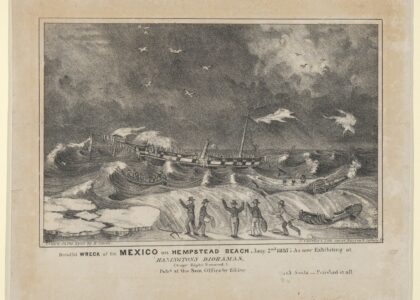Welcome to the captivating world of the Channel Islands Shipwrecks, a place where history and the sea intertwine to tell tales of adventure, tragedy, and survival. Located off the coast of Southern California, the Channel Islands have been the site of numerous shipwrecks, each with its own unique story that adds to the rich maritime heritage of the region.
The story of the Channel Islands Shipwrecks begins in the late 16th century when European explorers first navigated these treacherous waters. The islands quickly became a critical point on the map for traders and explorers alike, drawn by the promise of new routes and resources. However, the waters surrounding the islands were notoriously dangerous, with unpredictable currents, frequent fog, and hidden reefs that posed significant challenges to even the most experienced sailors.
One of the most famous shipwrecks in the area is that of the Gold Rush-era steamer, the SS Winfield Scott. In December 1853, the ship, laden with passengers and gold seekers heading for the California gold fields, struck a rock near Anacapa Island. Despite the ship’s destruction, all passengers and crew were safely evacuated to the island, where they awaited rescue. This incident highlighted the perils of sea travel during this era and the critical role the Channel Islands played in the broader narrative of the American Westward Expansion.
Throughout the 19th and early 20th centuries, the Channel Islands continued to see a steady flow of maritime traffic, much of it driven by the booming trade and transportation industries. However, with this increase in traffic came more shipwrecks. The islands’ rugged coastlines claimed many vessels, each adding a chapter to the evolving history of the area.
Notable figures in maritime history have been drawn to these waters, including explorers, traders, and even pirates, each leaving their mark on the local lore. The infamous smuggler George Nidever, known for his daring exploits in the mid-1800s, often used the islands as a base for his operations, adding a layer of intrigue and adventure to the region’s history.
As technology advanced, so did efforts to map and navigate these perilous waters. The 20th century saw significant improvements in navigation, reducing the number of shipwrecks but not eradicating them entirely. Today, the Channel Islands National Park preserves the remnants of these shipwrecks, offering a glimpse into a bygone era. Divers and historians alike are drawn to the underwater museum created by these sunken vessels, each a time capsule preserving the stories of those who once sailed these waters.
The legacy of the Channel Islands Shipwrecks is one of resilience and adaptation. While the seas remain unpredictable, the stories of survival, loss, and discovery continue to resonate with visitors. These shipwrecks serve as reminders of the region’s vibrant history and its ongoing relationship with the sea, a testament to the enduring spirit of exploration and adventure.
As you explore the Channel Islands, whether by land or sea, take a moment to reflect on the countless souls who traversed these waters, their stories etched into the very fabric of the landscape. The Channel Islands Shipwrecks are not just relics of the past; they are living stories, waiting to be discovered.




